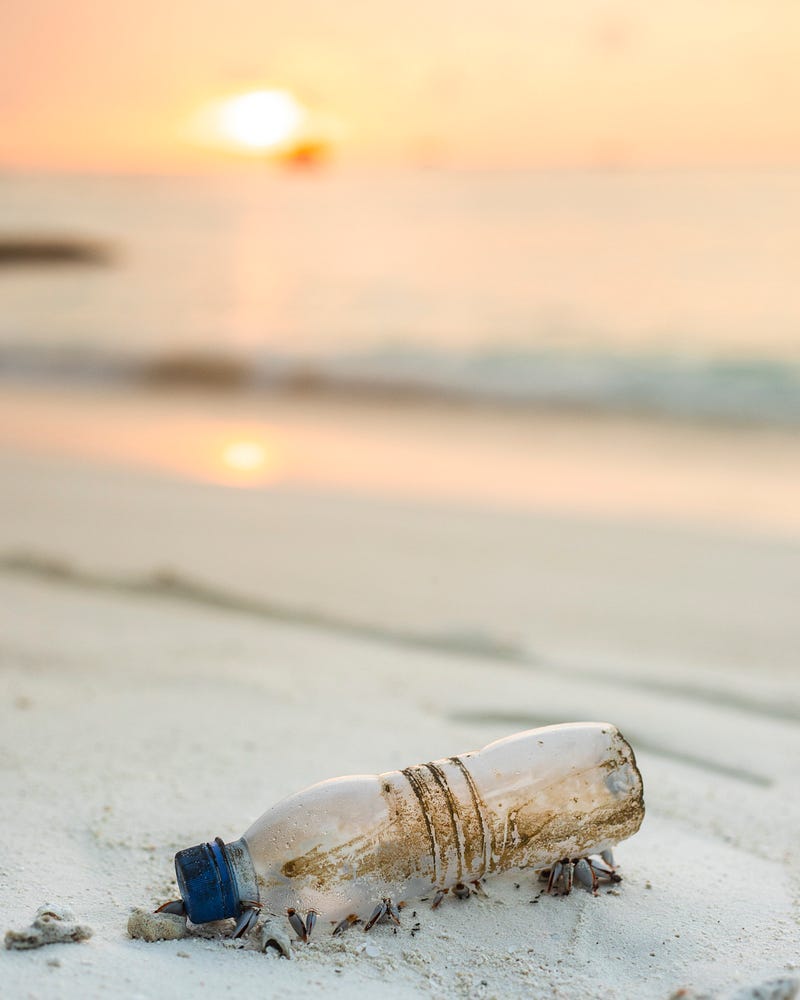## The Effects of Microplastics on Marine Ecosystems
### Abstract
Microplastics have emerged as a pervasive pollutant in marine ecosystems, posing significant threats to marine life and the overall health of ocean environments. This paper discusses the sources, distribution, and ecological impacts of microplastics on marine organisms, highlighting the urgent need for reduced plastic use and improved waste management practices. By examining current research findings, this study aims to underscore the critical necessity for global action to mitigate microplastic pollution and protect marine ecosystems.
### Introduction
Microplastics are defined as plastic particles smaller than 5 mm, originating from various sources, including the breakdown of larger plastic debris, industrial processes, and the shedding of synthetic fibers from textiles. Their small size allows them to infiltrate marine environments easily, where they are ingested by a wide range of marine organisms. The accumulation of microplastics in oceans has raised alarms about their potential effects on marine ecosystems and food webs.
### Sources and Distribution of Microplastics
#### 1. **Sources**
Microplastics enter marine environments through multiple pathways:
- **Land-based Sources**: A significant portion originates from urban runoff, wastewater treatment plants, and littering. For example, microbeads from personal care products and fibers from synthetic clothing contribute to coastal pollution.
- **Marine Activities**: Fishing gear, ship waste, and maritime activities also release microplastics into the ocean.
#### 2. **Distribution**
Microplastics are found in various marine habitats, including:
- **Open Ocean**: Studies have shown that microplastics are present in all oceanic regions, with concentrations varying based on proximity to urban areas.
- **Coastal Areas**: Estuaries and coastal ecosystems are particularly vulnerable due to human activities. Research indicates that microplastic concentrations can be significantly higher in these regions compared to open waters [4].
### Ecological Impacts of Microplastics
#### 1. **Impact on Marine Organisms**
Microplastics affect a wide range of marine life through ingestion and entanglement:
- **Ingestion**: Organisms such as zooplankton mistake microplastics for food. Once ingested, these particles can accumulate in their bodies or be transferred up the food chain [1][3]. For instance, zooplankton consuming microplastics may exhibit reduced feeding efficiency and altered reproductive behaviors.
- **Entanglement**: Larger marine animals can become entangled in plastic debris, leading to injury or death.
#### 2. **Food Web Dynamics**
The bioaccumulation of microplastics poses risks at various trophic levels:
- **Bioaccumulation**: Microplastics can accumulate in higher trophic levels as they are consumed by larger predators [4]. This process raises concerns about the potential health impacts on commercially important fish species and marine mammals.
- **Trophic Transfer**: Microplastics can carry harmful pollutants absorbed from the surrounding water, which may be released into the tissues of organisms upon ingestion [3]. This transfer can disrupt nutrient cycling and impact overall ecosystem health.
### Effects on Ecosystem Functions
#### 1. **Nutrient Cycling**
Microplastics can alter microbial communities in sediments, affecting nutrient cycling processes:
- Changes in microbial community composition due to microplastic presence can disrupt nitrogen cycling activities essential for maintaining ecosystem balance [1]. This disruption may exacerbate issues such as harmful algal blooms driven by nutrient overloads from agricultural runoff.
#### 2. **Oxygen Dynamics**
Microplastic pollution may contribute to oxygen depletion in ocean waters:
- Zooplankton that consume microplastics show reduced appetites for phytoplankton, leading to increased organic matter accumulation at the surface. As this organic matter decomposes, it consumes oxygen, further exacerbating hypoxic conditions in affected areas [1].
### The Need for Action
The pervasive nature of microplastic pollution necessitates immediate action:
- **Reduced Plastic Use**: Transitioning away from single-use plastics and promoting biodegradable alternatives is essential for mitigating future pollution.
- **Improved Waste Management Practices**: Effective waste management systems must be implemented globally to prevent plastic waste from entering marine environments.
- **Public Awareness Campaigns**: Educating communities about the impacts of plastic pollution can foster behavioral changes that contribute to reducing plastic consumption.
### Conclusion
Microplastics represent a significant threat to marine ecosystems, affecting both individual organisms and broader ecological processes. Their ability to bioaccumulate through food webs raises concerns about food safety and ecosystem health. To combat this issue effectively, it is crucial to implement strategies aimed at reducing plastic production and improving waste management practices globally.
Future research should focus on understanding the long-term ecological impacts of microplastics and developing innovative solutions for mitigating their effects. By prioritizing action against microplastic pollution, we can protect marine ecosystems and ensure their sustainability for future generations.






